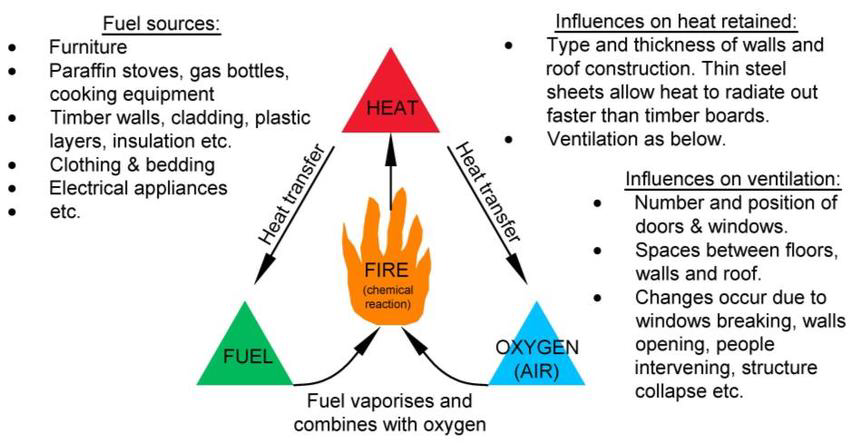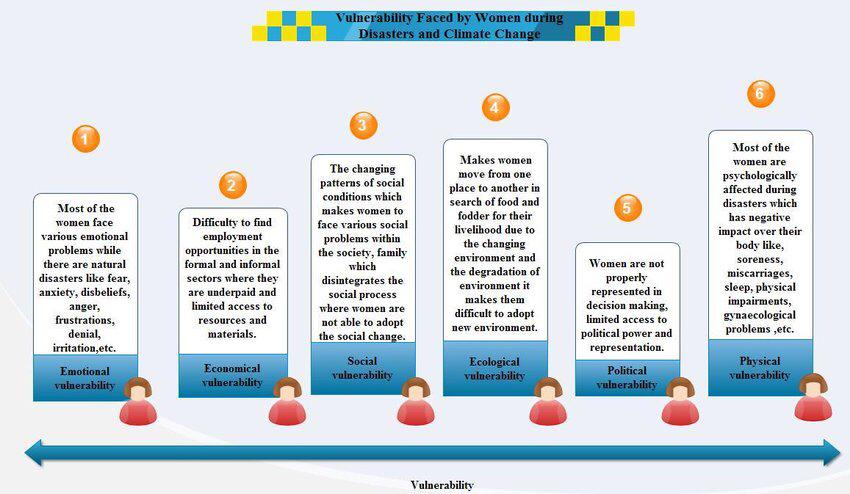24 Apr
HUMAN WILDLIFE CONFLICT
Why in news? Recently, the International Conference on Human-Wildlife Conflict and Coexistence was held in Oxford, the United Kingdom, which has brought hundreds of activists from 70 countries to discuss solutions to address Human-Wildlife Conflicts.
Background:
- Human-wildlife conflict (HWC) is fast becoming a critical threat to the survival of many globally endangered species, in particular to large and rare mammals.
- HWC has far-reaching environmental impacts. Species most exposed to conflict are also shown to be more prone to extinction because of injury and death caused by humans; these can be either accidental, such as road traffic and railway accidents, capture in snares set for other species or from falling into farm wells, or intentional, caused by retaliatory shooting, poison or capture.
What is Human Wildlife conflict ?
- Human–wildlife conflict is defined by the World Wide Fund for Nature(WWF) as "any interaction between humans and wildlife that results in negative impacts of human social, economic or cultural life, on the conservation of wildlife populations, or on the environment
- Human-wildlife conflict occurs when the needs and behavior of wildlife impact negatively on the goals of humans or when the goals of humans negatively impact the needs of wildlife
Causes of Human Wildlife conflict
Several factors that have contributed to the loss of both wildlife and people as a result of this conflict.
- Lack of Protected area: Only 9.67 per cent of the world's ocean and land areas are protected, leaving around 40% of the ranges of African lions and 70 per cent of those of African and Asian elephants unprotected. 35 per cent of the tiger range in India is currently outside of a protected area.
- Urbanization & Transport network : Kashmir witnessed a rise in the cases of conflict with experts blaming the undergoing urbanisation and transportation network for such incidents.
- Increasing human and livestock population: Locals encroach on forest land for farming, gathering fodder, and other purposes where they often come into conflict with wild animals and perish.
- Collection of timber and NTFPs: In a bid to harvest timber and other non- timber forest products, humans came into contact with wild animals and were killed by them.
- Growing wild animals’ favourite crops:For a living, farmers plant a variety of crops such as sugarcane, maize, wheat, vegetables, guava, and others. However, these crops used to attract wild animals, which then destroyed the crops by crop raiding and eating them.
- Deforestation: Deforestation, another significant factor in conflicts between humans and wildlife, is mostly brought about by the clearing of trees for agricultural land expansion, the gathering of firewood, and the burning of grazing livestock, as seen in parts of Chhattisgarh .
- Land use changes: The construction of communities near woods have changed the natural habitat of animals, caused them to shift their behaviour and migratory paths.For instance: Illegal buildings along the Nilgiri elephant corridor are a key contributing factor to elephant assaults in the area.
- Climate change: Recurring flooding, forest fires, and droughts brought on by climate change, forced the animals to abandon their natural habitats in search of food and shelter. For instance, during monsoons, animals in Kaziranga National Park shift to higher ground as a result of rising water levels. Due to the dense population in the Karbi-Anglong Hills, there are more interactions between humans and wildlife.
- Poaching: When predators’ prey base is reduced due to illegal poaching, it compels them to forage in adjacent villages. This causes these carnivores to kill cattle, putting them in confrontation with people.
- Increase of Alien Invasive Species: Wild herbivores’ access to food has decreased as a result of invasive plants likeProsopis juliflora and Lantana camara infesting forests. Herbivores leave the forest to graze on agricultural crops as a result.
- Conservation efforts’ success: Successes in species conservation have occasionally led to the development of a new HWC( Human & Wildlife Conflict ) .For instance, the Wildlife Protection Act of 1972’s ban on hunting has caused the population of vermin like wild boars and nilgai to explode. Due to their incursion into farmlands, as a result, there have been major crop failures.
Impact of Human & Wildlife conflict:
- Crop raiding: Huge amount of crops were lost by Wildlife in different countries of Africa. It not only effects the crops but also life of future generations by decreasing the percentage of school enrolments.
- Loss of biodiversity: Conflict between people and animals is one of the biggest risks to biodiversity, according to a report by the World Wide Fund for Nature (WWF) and the UN Environment Programme (UNEP).
- Disease transmission: Rise in HWC could lead to the transmission of new diseases to people that are comparable to COVID-19. For instance, the Kyasanur Forest Disease (KFD), often known as monkey fever, has been blamed for a number of deaths in the Shivamogga district of Karnataka state in recent years and fruit bats are thought to be the source of the Nipah virus outbreak in Kerala.
- Conservation efforts: Conflicts that recur make people less interested in protecting forests and wildlife, which has an impact on conservation efforts.
- Impact on Sustainable Development: Though not specifically listed, HWC is a crucial theme for achieving the objectives of biodiversity conservation, especially SDG 15. (life on land).
- Social outrage : HWC occasionally causes social outrages and calls into question the course of human growth and development, which has an impact on societal morality. For example, a national outcry was caused when a pregnant elephant died in Kerala in May 2020 after eating pineapples that had been loaded with firecrackers.
- Conservation efforts: Conflicts that recur make people less interested in protecting forests and wildlife, which has an impact on conservation efforts.
- Impact on Sustainable Development: Though not specifically listed, HWC is a crucial theme for achieving the objectives of biodiversity conservation, especially SDG 15. (life on land).
- Social outrage : HWC occasionally causes social outrages and calls into question the course of human growth and development, which has an impact on societal morality. For example, a national outcry was caused when a pregnant elephant died in Kerala in May 2020 after eating pineapples that had been loaded with firecrackers.
- Case Study: In September 2018, the Chhattisgarh Elephant project was initiated, focusing on reducing Human elephant conflict in Chhattisgarh. Hathi mitras teach people how to avoid encounters during village-level meetings. They agree that most casualties occur due to a lack of knowledge about elephant behaviour and movement. Encounters mostly take place at night when visibility is low. Hathi mitras track elephants through the help of fresh dung and foot prints. Though this helps minimise encounters, crop loss is inevitable.
Statistics:
- Between 2018-19 and 2020-21, 222 elephants were killed by electrocution across the country, 45 by trains, 29 by poachers and 11 by poisoning.
- Among tigers, too, 29 were killed by poaching between 2019 and 2021, while 197 tiger deaths are under scrutiny.
- Among human casualties of conflict with animals, elephants killed 1,579 humans in three years.
- Odisha accounted for the highest number of these deaths at 322.
- Around 222 elephant deaths is caused by electrocution
- Tigers killed 125 humans in reserves between 2019 and 2021. Maharashtra accounted for nearly half these deaths, at 61.
Laws in India against Animal killing
The Prevention of Cruelty to Animals (PCA) Act, 1960
- Causing harm to any animal during transportation is a cognizable offence. Tying up cattle in overcrowded vehicles is illegal, according to this Act. In fact, injecting anything injurious and serving any poisonous food is also illegal.
Indian Penal Code
- According to Sections 428 and 429 of the Indian Penal Code, it is illegal to throw acid on cows, injuring street dogs and cats & also invite punishment.
- In 2014, India introduced a nationwide ban on animal testing cosmetics.
- To report cases of illegal animal testing, which causes ‘considerable suffering’ to animals, a national helpline has also been launched.
Indian Wildlife Protection Act
- Under the Wildlife Protection Act of 1972, the act of hunting constitutes “capturing, killing, poisoning, snaring, or trapping any wild animal”.
- With the insertion of a new section, 51 A, the process of securing a bail upon committing an offence has become more difficult.
Constitutional protection for animal rights
- Article 48 A states that the State shall endeavour to protect and improve the environment and safeguard the forests and wildlife of the country.
- Article 51A(g) states it to be a duty of every citizen of India “to protect and improve the natural environment including forests, lakes, rivers, and wildlife, and to have compassion for living creatures.”
Measures for protecting wildlife in India
- NBWL, the National Board for Wildlife: A principal authority for examining all issues involving wildlife and approving projects in and near national parks and sanctuaries.
- Wild life Crime Control Bureau: To stop the criminal trade in wildlife and endangered species, the Wildlife Crime Control Bureau (WCCB) was founded under the WPA in 1972.
- Conservation Programs: Specific projects have been devised, such as Project Tiger, Project Elephant, and Project Rhino, to stop the population decline and safeguard important species.
- Eco-sensitive zones: To act as a sort of shock absorber around the protected regions, an Eco-Sensitive Zone is designated.
- Project RE-HAB: To prevent elephant attacks on human settlements using honey bees and so minimise the loss of both human and elephant lives.
What can we do to mitigate human-wildlife conflict?
- Creating more Protected Areas and buffer zones
- Steps must be taken to enhance the safety of people and wildlife and to create mutual benefits of coexistence
- Local communities can also participate in devising measures to reduce this conflict
- The concerned authorities must devise a strategy and action plan to reduce human-wildlife conflict at a national level
- Before camping, hiking, or venturing into natural areas, learn about the animals that you might encounter
Conclusion:
HWC should be acknowledged as a crucial region for sustainable development and wildlife preservation. In order to realise the 2050 vision of “living in peace with nature,” human-wildlife coexistence must be incorporated into the implementation of the SDG framework and made an official goal of the Convention on Biological Diversity’s (CBD) process.
Green Hybrid Tugs
Tugs are special boats that assist other vessels into and out of port. The primary purpose of these boats is to help move larger ships by towing, pushing, and guiding. With an aim to make India a global hub for building green ships, the Ministry of ports, shipping and waterways (MoPSW) launched ‘Green Tug Transition Programme’ (GTTP). The goal is to turn every tugboat in use in the nation into a "Green Hybrid Tug," one that runs on non-fossil fuels like hydrogen, ammonia, and methanol.
Heat Index - Edukemy Current Affairs
It is the combination of air temperature and relative humidity, it measures how hot it really feels when relative humidity is factored in with the actual air temperature. The India Meteorological Department (IMD) is planning to introduce a ‘heat index’ warning system in Delhi and other parts of the country.
Sky canvas
It is the world’s first artificial meteor shower project. The aim of the project will be to collect atmospheric data in the mesosphere. Under this , meteor-replicating particles will be installed in a satellite 250 miles (400 km) up and then released over a designated area.
Minor mineral
Minor minerals are those which are prescribed by Mines and Minerals (Development and Regulation) Act, 1957 (section 3(e)) as being categorized as ‘minor minerals’. Any mineral which by the notification of the Central Government may declare to be a minor mineral. The State Government may, by notification in the Official Gazette, make rules for regulating the grant of quarry leases, mining leases or other mineral. Recently Odisha has gone overboard in tightening the noose around minor mineral smugglers.
Coronal Mass ejection
Coronal Mass Ejections (CMEs) are large expulsions of plasma and magnetic field from the Sun’s corona. They can eject billions of tons of coronal material and carry an embedded magnetic field (frozen in flux) that is stronger than the background solar wind interplanetary magnetic field (IMF) strength. CMEs travel outward from the Sun at speeds ranging from slower than 250 kilometers per second (km/s) to as fast as near 3000 km/s. Recently , the Sun has been spitting out some pretty powerful eruptions
Sea floor spreading and Global warming
Why in news: Seafloor spreading, caused by an upwelling of magma, has led to episodes of global warming.
Background:
- Between 14 and 17 million years ago, known as the Miocene Climatic Optimum (MCO) period, temperatures soared (around 10°C higher than today) and carbon dioxide (CO2) levels rose to 1,000 parts per million (PPM) against the current 419 PPM, leading to the disappearance of glacial masses and several species.
- Human activities are already spewing greenhouse gases into the atmosphere, pushing the planet towards a climate tipping point.
About:
- Underwater volcanoes known as the mid-ocean ridge system, spew molten magma from the Earth’s interiors, which gradually moves away from the ridge and cools down to form rocks.
- Since new ocean floor or crust is created during such seafloor spreading, the Earth returns a similar area into the deep mantle elsewhere by pushing the older seafloor towards subduction zones.
- Seafloor spreading rates impact CO2 levels. Faster spreading plates have more volcanic activity and inject more CO2 into the water, some of which eventually ends up in the atmosphere.
- Whenplates spread rapidly, the entire base of the seafloor rises, as do sea levels. But during slow movement, the base and sea levels fall as the crust material cools.
Major Findings
- Using magnetic records of the seafloor,available in their complete forms for the last 19 million years, Scientists have mapped the spread rates of 18 major mid-ocean ridges.
- Some 15 million years ago, therate of seafloor spreading was 200 mm a year, whereasnow, on average, it is 140 mm a year. So, spreading has slowed by 35 per cent.
- But not all ridges moved alike; while some sped up, others slowed down.
- 15 of the 18 ridges slowed down.
- The fastest known spreading rate of a tectonic plate is 210-220 mm a year— roughly the rate of the growth of human hair.
- Slow plates spread less than one-tenth as much as their faster counterparts.
- Ridges along the eastern Pacific have such plates whose spread rates are nearly 100 mm a year slower compared to 19 million years ago, lowering the world’s average.
- The reduced rates in this region could be because the Pacific Oceanis getting smaller while the Atlantic and Indian Oceans are getting bigger.
- The reason for this slowdown is unknown, mantle circulation may be driving it.
Definite link to CO2 levels
- Studying seafloor spreading rates will show how tectonic forces contribute to the global carbon budget.
- Tectonic plates are known to recycle carbon.During volcanic eruptions at the ocean ridges, CO2 trapped in the lava escapes into the atmosphere.
- At subduction zones, the gas is removed from the surface when organisms such as corals and plankton die and sink to the bottom of the seafloor. Their shells, made of calcium carbonate, combine with sediments to form limestone that ferry the trapped carbon into the mantle.
- Faster seafloor spreadingis linked with higher CO2 levels during the MCO period.
- During the MCO period, magnetic records show that the total new crust production ratewas 3.5 sq km per year due to fast-spreading plates.
- Since then, the new crust production rate has dropped to a little above 2.5 sq km a year.
- To estimate the levels of CO2, the team analysed the ratio of boron isotopesfound in fossils of foraminifera, a single-celled organism that builds complex shells using minerals in the seawater.
- The analysis shows thatCO2 levels varied between 500-1,000 PPM during the MCO.
- This does not prove that CO2 contributed to the speed of the spread, but there is a strong link between the two.
- The idea is that the amount of CO2 released from underwater volcanoes should be approximately proportional to the amount of seafloor generated at the mid-ocean ridge.
- Researchers from Australia find that during theCretaceous Period 145-66 million years ago, when dinosaurs dominated the land, atmospheric CO2 levels shot above 1,000 PPM, taking the mean annual temperatures up to 10°C higher than today.
- The study said that 66 million years ago when Earth entered the Cenozoic era,CO2 levels dropped to 300 PPM and the seafloor spreading slowed down.
Conclusion
- Seafloor spreading, caused by an upwelling of magma, has led to episodes of global warming in the geologic past; the spread rate has slowed down in the last 19 million years but could gather momentum.

Hybrid solar eclipse : A rare celestial event of the century
Why in news? A hybrid solar eclipse was witnessed on April 20, 2023
Background:
- A hybrid solar eclipse darkened skies in Australia, Timor-Leste and Indonesia on April 20, 2023.
- Depending on the location of each observer, some saw a partial eclipse, others saw an annular or “ring” eclipse, and still others saw a total eclipse.
What is Hybrid solar eclipse?
- Solar eclipse occurs when the Moon passes between Earth and the Sun thereby totally or partly obscuring the Sun for a viewer on Earth.
- A hybrid solar eclipse is a rare type of solar eclipse that changes its appearance from annular to total and back as the Moon's shadow moves across the Earth's surface.
- Totality occurs in a narrow path across the surface of the Earth, with the partial solar eclipse visible over a surrounding region thousands of kilometers wide. Hybrid solar eclipses are extremely rare, occurring in only 3.1% of solar eclipses in the 21st century
Visibility
- The rare hybrid solar eclipseswept over the South Pacific, with the moon's shadow passing over western Australia, East Timor and Indonesia.
- Eclipse was not visible in India.
- They occur when Earth is in the “sweet spot" so the new moon and the sun are almost the exact same size in the sky.
- At some points, the moon is a little closer and blocks out the sun in a total eclipse. But when the moon is a little farther away, it lets some of the sun's light peek out in an annular eclipse.
- The last hybrid solar eclipse happened in 2013, and the next will occur in 2031, only seven of this type of eclipse will occur in the entire 21st century.
Naming of the eclipse
- The unusual hybrid solar eclipse, occurring today is named Ningaloo. The name of the solar eclipse 'Ningaloo' originated from the name of the Australian shoreline Ningaloo. And it received its name because of its partial visibility.
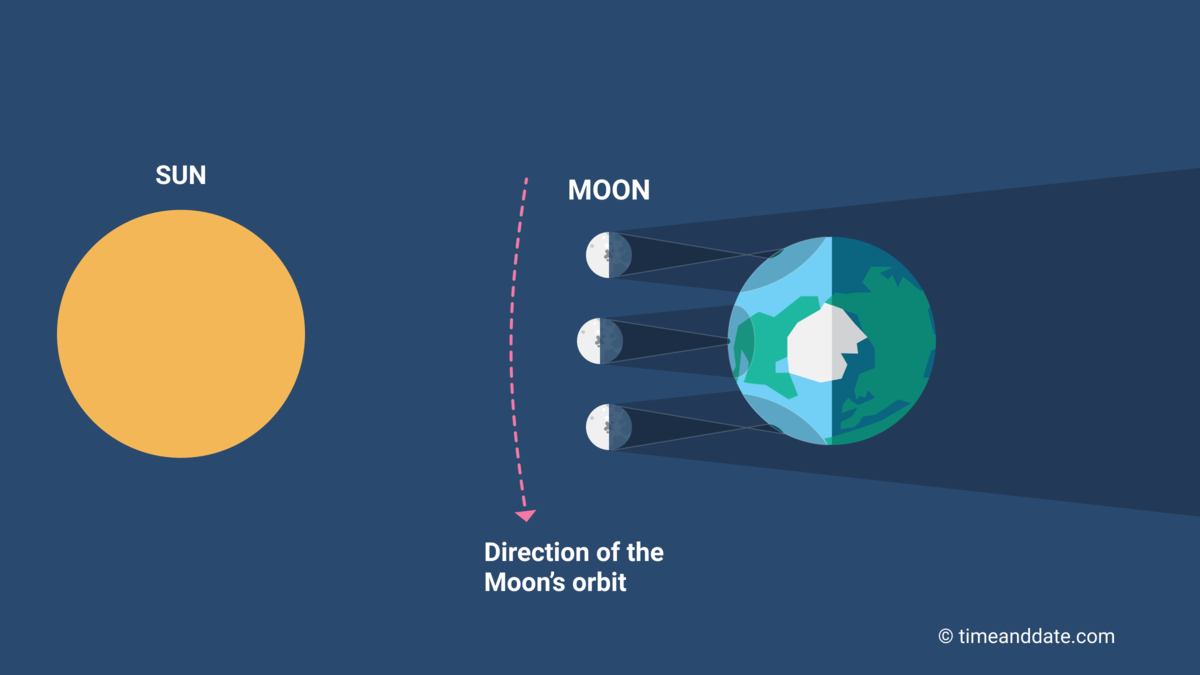
Local democracy solving water crisis in a Rajasthan
- Decentralized initiatives coupled with community participation have improved rainwater harvesting & recharge of groundwater in Dungarpur in southern Rajasthan .
- Strengthening the local Gaon Sabhas (Village Assemblies) in Dungarpur, helped to prepare Village Development Plans and building the capacities of the Gram Panchayat.
- The Gaon Sabha members were involved in the planning, design, construction and maintenance of the ponds.
- After the pond filled in the monsoon, groundwater recharge has improved , water level has increased , facilitating the cultivation of monsoon paddy crop and rabi
- If the pond dries up in winter, soil moisture is used to grow rabicrops in the bed of the pond, a practice that is called Khet Talavadi.
- The recharge capacity of wells near the ponds is supporting the irrigation of a third crop in summer and increasing availability of drinking water for humans and livestock in the summer.
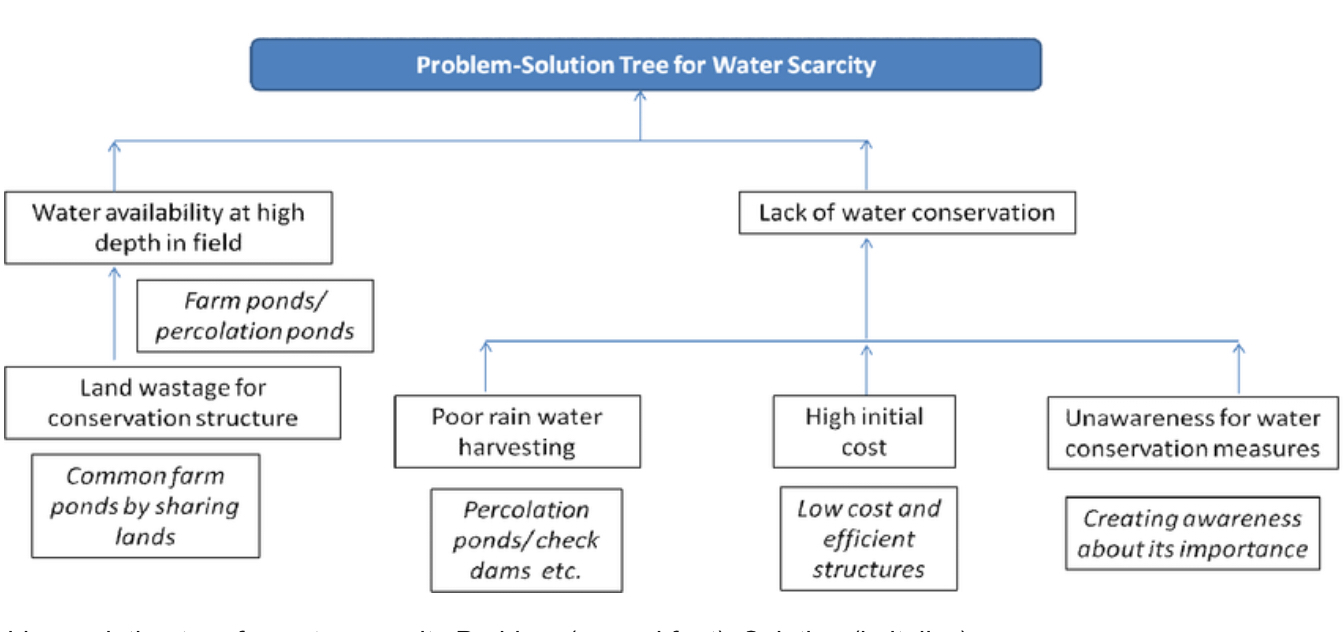
Map
|
1. |
Anji River: Anji River is a tributary of Chenab River between Katra and Reasi district of Jammu. India will get its first cable-stayed railway bridge by May this year on the Anji river in Jammu and Kashmir. |
|
2. |
Androth Island: It is a small inhabited island in the Union Territory of Lakshadweep, a group of 36 coral islands scattered in the Arabian Sea off the western coast of India. Recently it was reported that islands are facing an environment disaster. (Approx. Kavaratti) |
|
3. |
Samaspur Bird Sanctuary: It is a protected area situated near in Raebareli district, Uttar Pradesh, India. The sanctuary has 6 wetlands which sanctuary has 6 wetlands out of which 5 are interconnected and one wetland is standalone. These wetlands form an important nesting and feeding ground for birds especially the Waterfowls. Form an important nesting and feeding ground for birds especially the Waterfowls. Recently Sarus crane bird has gone missing from the Samaspur bird sanctuary. (Approx. Rae Bareli) |
|
4. |
Pattanam: It is a village located in the Ernakulam District in the southern Indian state of Kerala. It is often referred to as the ‘first emporium’ of the Indian Ocean. Recently excavations revealed that site is classical example of Greco-Roman classical age coming into direct contact with an ancient South Indian civilisation. (Approx. Ernakulum) |
|
5. |
Golaghat: It is a district in the state of Assam in a India , on the banks of river Dhansiri. “Gola" means market and "Ghat" means the port of river transport.Recently, conflict occur between the people of Nagaland and Assam over the territorial control over the district. (Approx. Jorhat) |
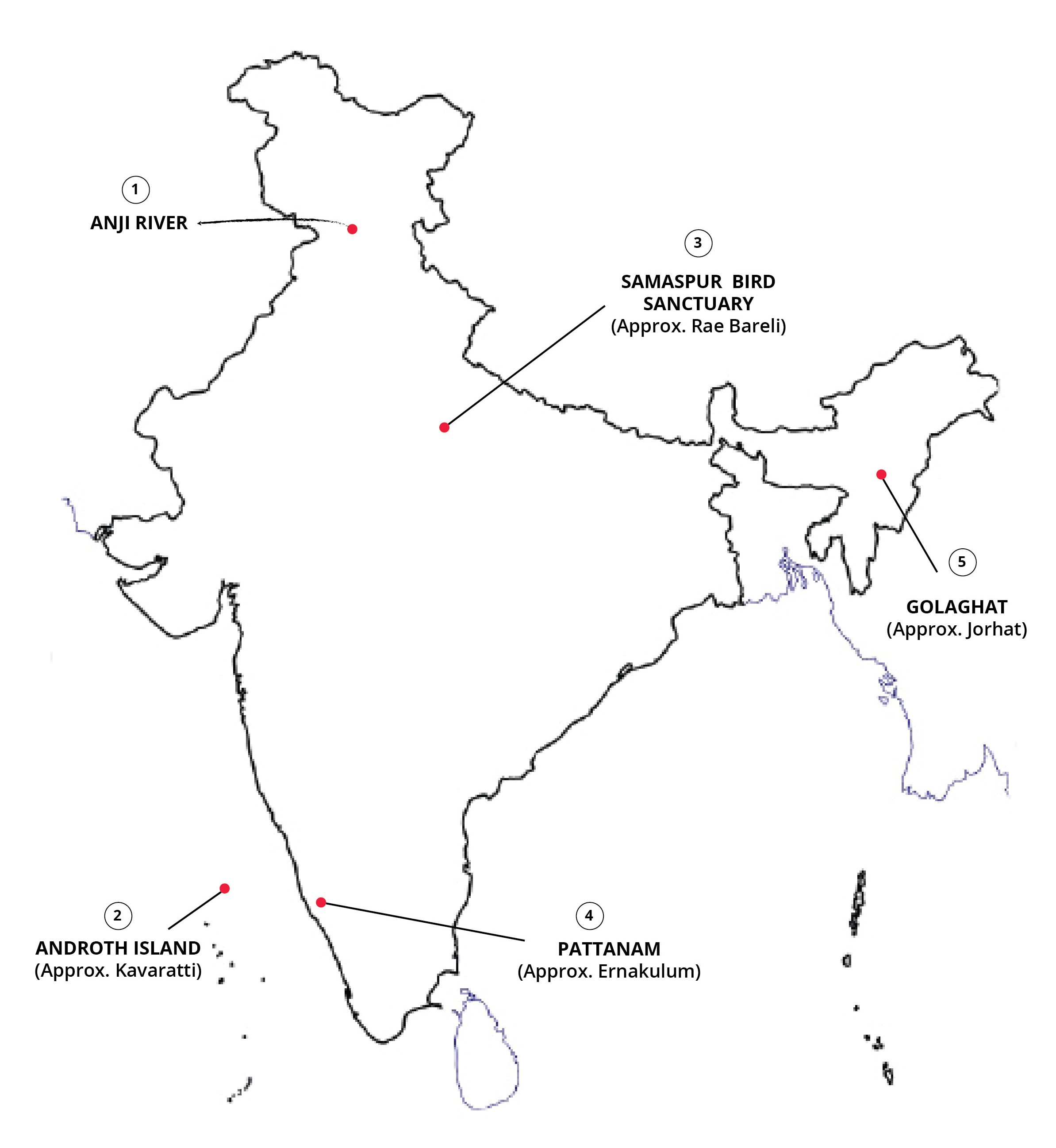
KOSMOS MCQs
1. With reference to National Chambal Sanctuary, consider the following statements:
- It is situated in the Maikal range of Satpuras in Madhya Pradesh.
- Only known place where nesting of Indian Skimmers is recorded in large numbers
- Kuno River, one of the major tributaries of the Chambal River, flows through its entire length, bisecting the Sanctuary.
Which of the above mentioned statements is/ are correct?
- 1 and 2 only
- 2 only
- 2 and 3 only
- 1 and 3 only
2. Consider the following statements regarding Equinoxes:
- On the day of equinoxes, Earth’s 23.5° axis is neither tilted toward nor away from the sun.
- During the equinoxes, solar declination is 0 degree.
Which of the above mentioned statements is/ are correct?
- Only 1
- Only 2
- Both 1 and 2
- Neither 1 nor 2
3. Consider the following statements regarding Sarus Crane:
- It’s breeding season coincides with the winters in the Northern Plains.
- It is included in the Species recovery programme of Ministry of Environment and Forest .
Which of the above mentioned statements is/ are correct ?
- Only 1
- Only 2
- Both 1 and 2
- Neither 1 nor 2
4. With regard to DNA profiling of elephants, consider the following statements:
- Studies revealed that elephants’ mitochondrial DNA , as opposed to nuclear DNA is diverse.
- The project is a part of Monitoring of Illegal killing of Elephants (MIKE) programme.
- The Nilgiri landscape has the largest single population of endangered Asian elephants worldwide.
Which of the above mentioned statements is / are correct?
- 1 and 2 only
- 3 only
- 2 and 3 only
- 2 only
5. Consider the following statements regarding Western Disturbances:
- The trajectory of Western Disturbances changes as per the position of the Sun.
- Western disturbances are also responsible for the cloudburst.
Which of the above mentioned statements is/ are correct?
- Only 1
- Only 2
- Both 1 and 2
- Neither 1 nor 2
6. Consider the following pairs:
Rivers : Tributary
- Chenab : Anji
- Krishna : Borgong
- Kosi : Arun
Which of the above mentioned pairs are correct?
- One pair is correct.
- Two pairs are correct.
- Three pairs are correct.
- None of the pairs are correct.
7. With reference to Planetary Alignment, consider the following statements:
- All terrestrial planets aligned in the line sky is often termed as Planetary parade.
- Venus will be the most visible planet, followed by Mars with its special orange hue.
Which of the above mentioned statements is/ are correct?
- Only 1
- Only 2
- Both 1 and 2
- Neither 1 nor 2
8. “Bio transformation Technology “ recently in news is associated with which among the following :
- To protect coral reefs by building rock like materials.
- Use of microbial enzymes to remove toxins from the food.
- Process of growing crops to increase nutrition value from the seed.
- Strategy for efficiently processing plastics.
9. Consider the following:
- Algeria
- Mauritania
- Niger
- Egypt
- Sudan
Which of the above mentioned countries are part of Great Green Wall of Africa?
- 1, 2, 3 and 4
- 1, 3, and 5
- 2, 3 and 4
- 1, 3, 4 and 5
10. According to India’s National Policy on Biofuels, which of the following can be used as raw materials for the production of biofuels ?
- Cassava
- Damaged wheat grains
- Groundnut seeds
- Horse gram
- Rotten potatoes
- Sugar beet
Select the correct answer using the code given below:
- 1,2,5 and 6 only
- 1,3 ,4 and 6 only
- 2,3 ,4 and 5 only
- 1,2,3,4,5 and 6
11. Consider the following statements regarding Earth Hour:
- It is an initiative by World Wildlife Fund during the period of vernal equinox.
- It was first observed in the Sydney state of Australia during the year 2007.
Which of the above mentioned statements is/ are correct?
- Only 1
- Only 2
- Both 1 and 2
- Neither 1 nor 2
12. Consider the following statements regarding Great Indian Rhinoceros :
- It is the only large mammal species in Asia to be down-listed from endangered to vulnerable in the International Union for Conservation of Nature, IUCN Red list
- It has Incredible sense of hearing and smell, but It’s eyesight Is relatively poor.
- They are both vegetarian and non vegetarians.
Which of the above mentioned statements is/ are correct?
- 1 and 2 only
- 2 and 3 only
- 1 and 3 only
- 1,2 and 3
13. Consider the following statements regarding Valmiki National Park:
- It is located on the Kaimur plateau in south western part of Bihar.
- Rivers Gandak, flows through various parts of the reserve.
- It is the only National Park in the state of Bihar
Which of the above mentioned statements is/ are correct?
- 1 and 2 only
- 2 and 3 only
- 1 and 3 only
- 1,2 and 3
14. State of India’s Environment report 2023, is released by which among the following organisations:
- Bombay Natural History Society
- Centre for Science and Environment
- Greenpeace India
- Environs
15. Consider the following statements regarding Marine Protected Areas:
- Marine Protected areas in India covering coastal areas have been notified under Environment Protection Act of 1986.
- MPAs do not necessarily exclude fishing, research or other human activities.
Which of the above mentioned statements is/ are correct?
- Only 1
- Only 2
- Both 1 and 2
- Neither 1 nor 2
Share the article
Get Latest Updates on Offers, Event dates, and free Mentorship sessions.

Get in touch with our Expert Academic Counsellors 👋
FAQs
Geography Current Affairs focuses on the contemporary issues, events, and developments in the field of geography. It covers recent geographical phenomena, environmental changes, geopolitical shifts, and related news. This differs from regular geography studies which may focus more on foundational concepts, historical contexts, and theoretical frameworks.
Updates are provided regularly to ensure that subscribers stay informed about the latest developments in geography. Typically, updates are provided on a fortnightly basis, depending on the frequency of significant events and changes in the field.
Absolutely. Geography Current Affairs serves as a valuable resource not only for Geography optional but also for GS papers, especially GS Paper 1 (covering Indian Heritage and Culture, History, and Geography of the World and Society) and GS Paper 3 (covering Technology, Economic Development, Biodiversity, Environment, Security, and Disaster Management). It aids in building a holistic understanding of various topics and strengthens answer-writing skills by incorporating contemporary examples and perspectives.
Geography Current Affairs holds immense importance for UPSC preparation, particularly for aspirants opting for Geography optional. It helps candidates stay updated with the latest developments, geographical phenomena, environmental issues, and geopolitical shifts worldwide, aligning them with the dynamic nature of the subject as tested in the UPSC examinations.

